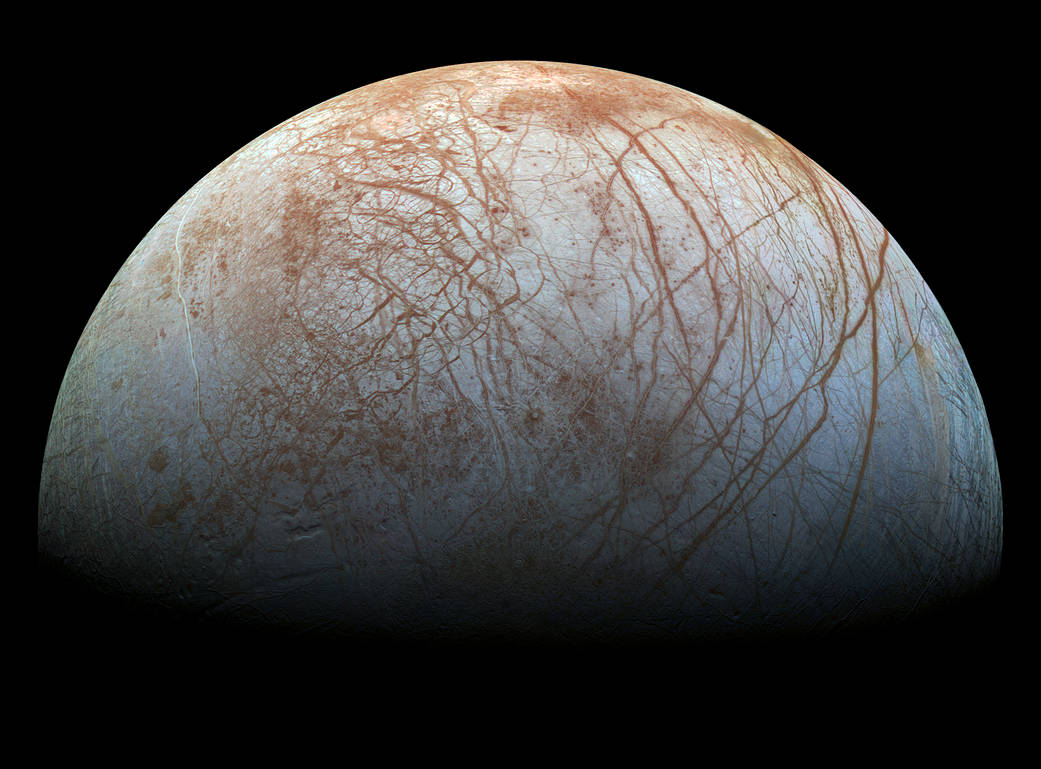-
Scientists Discover a New Method for Exploring Europa’s Extraterrestrial Ocean
August 12, 2019 / Written by: Glorie Martinez
Europa's stunning surface, which may hold clues to the characteristics of the oceans hidden underneath. Image Credit: NASA/JPL-Caltech/SETI InstituteEarth is a world of astonishing biodiversity. Yet, despite the extreme variety of lifeforms on our planet, there is one key trait all life here shares: none of it can survive without water. This is why, when scientists scour the cosmos for potentially habitable worlds, the presence of liquid water is one of the most alluring traits a celestial object can exhibit.
390 million miles away from Earth, an icy moon harbors an abundance of liquid water just below its frozen surface. Jupiter’s moon Europa is home to an extraterrestrial sea that’s billions of years old, and may be up to ten times as deep as Earth’s own global ocean. The existence of Europa’s ocean, combined with the chemical interactions between the water and its rocky core, makes the moon a promising candidate for studying habitability in our solar neighborhood.
NASA’s Europa Clipper mission, set to launch in 2023, will perform a series of fly-by flights to study the moon’s surface and interior. NASA is also considering sending a lander to Europa- a science platform that will roam the surface of the moon searching for signs of past and present life. However, these missions are unlikely to drill through Europa’s thick crust to sample its intriguing depths. Such an endeavor would prove both costly and technically challenging.
A team of researchers, supported in part by the NASA Astrobiology Institute’s Jet Propulsion Laboratory Icy Worlds team, have devised a possible solution – study Europa’s ocean by examining the expression of salts on the moon’s surface.
Current scientific models of Europa predict that its ocean’s chemistry is primarily composed of four species of ionic components: sodium (Na+), magnesium, (Mg2+), chlorides (Cl–) and sulphates (SO42-). These ions interact with each other to form a range of compounds, including NaCl (more commonly known as table salt) – the same compound that gives Earth’s ocean its characteristic saltiness. The relative concentration of these compounds is a key factor in determining the habitability of Europa’s waters. As Mathieu Choukroun, planetary scientist at NASA’s JPL and a co-author of the Icarus paper, explains in an interview with Astrobiology Magazine, “For comparison, many species thrive in the mildly salty oceans on Earth, whereas only a few species have been able to adapt to extremely salty environments like the Dead Sea.”
The research team developed chemical flowcharts to model the proportions of different components of minerals on Europa’s surface in various scenarios, then tested them in the laboratory to piece together what the concentration of the four principle ions revealed regarding the oceanic conditions on Europa. For example, a low concentration of magnesium ions (Mg2+) on the moon’s surface would indicate an acidic ocean, while a higher level would result in alkali waters. Insight into the chemical composition of Europa’s ocean allows scientists to characterize the alien sea, understand how it was formed, and eventually connect the dots to determine its potential habitability.
The discoveries made using these chemical flowcharts raise awareness that the composition of Europa’s surface mineralogy and its subterranean sea are likely linked. The experiments may serve to direct aspects of future exploration of Europa’s ocean, providing a possible blueprint for important research to come.
Source: [Icarus]
- The NASA Astrobiology Institute Concludes Its 20-year Tenure
- Global Geomorphologic Map of Titan
- Molecular Cousins Discovered on Titan
- Interdisciplinary Consortia for Astrobiology Research (ICAR)
- The NASA Astrobiology Science Forum Talks Now on YouTube
- The NASA Astrobiology Science Forum: The Origin, Evolution, Distribution and Future of Astrobiology
- Alternative Earths
- Drilling for Rock-Powered Life
- Imagining a Living Universe
- Workshops Without Walls: Astrovirology